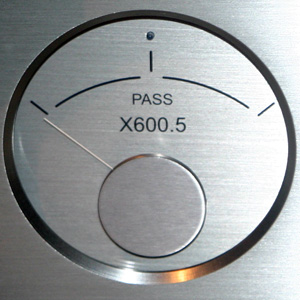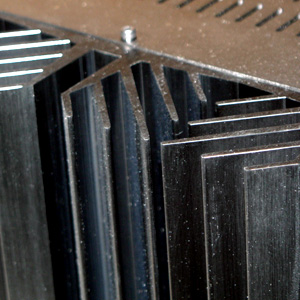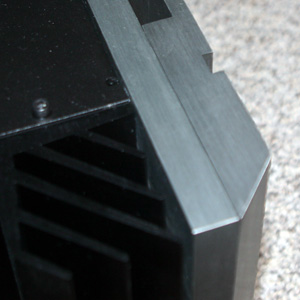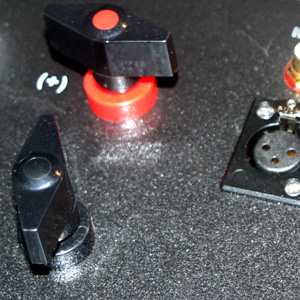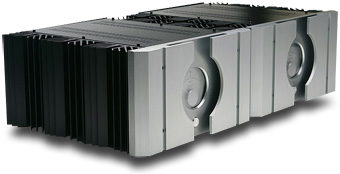 |
|||||||||
| December 15, 2007
Say you’re a contestant on Who Wants to be a Millionaire and the question you need to answer -- the one that will win you $1,000,000 -- pertains to solid-state amplifier design. You’re allowed to make one phone call to enlist help, and you can reach anyone in the world. Whom do you call? One name comes to my mind: Nelson Pass. Is there a more iconic figure in hi-fi amplifier design? Does anyone have more experience and more classic creations under his belt? Has anyone been around the circuit-board trace more times? Nelson Pass’s designs have stood the test of time. Take, for instance, his first classic, the Threshold 800A, from 1975. Pass founded Threshold in the early ’70s, and the 800A was the "first amplifier to actively adjust the bias of the output stage so as to maintain class-A forward bias over the whole operating cycle of the output." Search the used-equipment classifieds and look at (if you can find one) a Threshold SA/4e -- a class-A, 100Wpc beauty that today retains nearly half its original retail value on the used market. That may not be uncommon for a one-generation-old model from a current manufacturer, but Pass designed the SA/4e some 20 years ago. That’s staying power, and proof to me that a well-designed product of yesteryear can still be relevant today. In fact, some audiophiles swear that models from the Pass-helmed Threshold are still competitive with today’s better solid-state amplifiers. If you find a mint-condition SA/4e, you might want to pick it up. It’s a collector’s item that’s unlikely to go down in value, and you’ll own a piece of audio history. You’ll also have a great-sounding amp. Or you could just buy a current Pass offering -- the Pass Labs X600.5 monoblock ($20,000 USD per pair). Not skimping on hardware If you peruse the current solid-state amplifier offerings from a number of companies, you’ll see many class-D digital-switching designs. These amps are small in size, high in power, run cool, and in some circles they’re all the rage. Their sound quality has been lauded by many, dismissed by others. One thing you can’t debate is that class-D switching amps are less expensive to build and ship than their large, more conventional analog cousins. In fact, I’ve wondered over the last few years if the low cost of manufacturing such tiny amplifiers is a primary reason for building and selling them. In the cases of the models equipped with the ubiquitous ICEpower module -- an off-the-shelf solution that many companies use for these designs -- there seems very little to differentiate one brand of class-D amp from the next. Contrast that with the X600.5 monoblock, which puts out 600W into any load, and the differences couldn’t be more striking. Each of these babies weighs 150 pounds, measures 19"W x 11.5"H x 22"D, contains some serious hardware, and is made in the Pass Labs facilities in Foresthill, California. Consider the following: Each X600.5 contains a potted 1800W custom transformer, 48 MOSFET transistors, six huge 25,000µF filter capacitors, and six immense aluminum heatsinks. There’s also a gorgeous brushed-aluminum faceplate fitted with a cool-blue meter that indicates the level of current in the output stage, and, on the rear, some serious wing-nut binding posts, balanced XLR and single-ended RCA inputs, and an IEC power-cord input. The number of muscle-car parts alone that comprise a single X600.5 is inspiring. When I contrast that with one of those little ICEpower jobbies, I suddenly feel as if I’m comparing a box of Campbell’s instant soup with the rich stews Mama used to make. Not only that, the X600.5’s design is unique: this two-gain-stage, class-A device is arranged in a balanced configuration. Pass also uses a further enhancement, which he calls Supersymmetry, which takes things a bit further than an ordinary balanced circuit: "Distortion and noise identical to both halves of a balanced circuit can be made to disappear at the output," he explains, "and in a well-matched symmetric circuit, most of the distortion and noise is identical. Pass Laboratories Supersymmetry enhances this effect by providing a connection between the two halves of the balanced circuit that further perfects the match of common-mode artifacts. Any distortion and noise not already identical to the two halves is made more identical by a factor of about ten. The result of this perfected match is improved noise cancellation at the output of the amplifier. Unlike feedback techniques where the goal is to correct for the distortion by feeding a gain stage an inversely distorted signal, Supersymmetry seeks merely to create perfect matching between the two halves of an otherwise well matched circuit. Matched balanced power circuitry typically sees a distortion and noise reduction of about 90% (20dB) through a balanced connection without any additional effort. The Supersymmetry circuit delivers another 90% reduction. . . ." The Pass Labs website has more information on this and other Pass inventions, but perhaps the largest clearinghouse for Pass knowledge is www.diyaudio.com, where there is an entire forum devoted to his designs, and particularly to his endearing commitment to the do-it-yourself community. Ask Nelson Pass a technical question about a product you’re building from one of his circuits and you’ll get a straightforward answer from him or one of his followers. This has to be unique in the industry.
No skimping on sound Most audio reviewers seem to have a hard time with weighting -- that is, attaching the proper importance to the changes that review components make in their systems. If you regularly read audio reviews, more often than not you’ll come away believing that each piece of gear made a dramatic difference to the overall sound of the system it was inserted into. In other words, as anyone familiar with the audiophile press knows, reviewers are experts at making mountains out of molehills. I hate to say it, but it seems that readers would be well served by learning to "de-weight" much that they read about. In an attempt to be unambiguous, I offer the following: In the hierarchy that ranges from what matters least to what matters most to a system’s sound, my experience has been that good digital sources and decent cables rank quite low -- they typically don’t make night-and-day changes in the sound. On the other end of the scale are speakers and rooms, which don’t just alter the sound of a system, but define it. Also in my experience, after the speakers and room, it is the power amplifier makes the largest difference. In a way, that’s still partially the effect of the speakers at work -- the amplifier has to deal with the speakers’ impedance curve, and how it does so helps define what you hear. However, I also contend that each model of power amplifier itself has an inherent sound that holds true from speaker to speaker, and I’ve heard no better example of that than the Pass Labs X600.5 monoblock. This amplifier had a character that came through no matter what speaker I used it with. This wasn’t a coloration, but a sonic character: simply put, the X600.5 sounded more lifelike -- as if one step closer to a pure microphone feed -- than almost any other amplifier I’ve heard. The best music to hear this with was any recording that included well-recorded stringed instruments. Depending on the recording and the quality of the system, strings can sound canned, or they can sound utterly present in my room. With expertly recorded, minimally miked acoustic guitar, for instance, you can accurately assess just how close to the sound of live music your hi-fi can come. The X600.5s seemed designed for this type of test. They reproduced music with fantastic, natural resolution and speed -- but even that sounds more "hi-fi" than what I’m trying to convey. Perhaps a better way to describe the X600.5’s character is to relate it to one of Pass Labs’ key design elements: the fact that this amplifier has only two gain stages. I normally shy away from ascribing a certain characteristic of a component’s sound to a specific aspect of its design -- a reviewer can quickly get himself in trouble with such shenanigans. But in this case, even if the reason is not purely due to the fact that Pass Labs amps have only two gain stages -- instead of the four, five, or nine found in designs from other manufacturers -- it sounded as if there were fewer barriers between me and the source. That could be one of the reasons, but really, the X600.5s just let me get that much closer to the music. I could clearly hear this phenomenon when listening to stringed instruments such as those in the introduction to "Tall Trees in Georgia," from Eva Cassidy’s Live at Blues Alley [CD, Blix Street 10046]. This speedy playing needs to sound immediate to sound real, and it clearly did through the X600.5s Other areas in which the X600.5s seemed to shine were more typical of good solid-state designs: The Passes produced deep, well-controlled bass that was a bit rounder and fuller than what I’ve heard from, say, a large Krell amp. "Norbu," from Bruno Coulais’s Himalaya [CD, Virgin 8 48478 2], reverberated naturally in my room, generating powerful, fully developed waves of bass. The X600.5s easily controlled the massive bass output from my Rockport Technologies Altair speakers. The bass didn’t sound overdamped or too tight, but instead decayed naturally, just as I’d expect it to in a real acoustic space. The Passes had just enough grip to control the low end and deliver the right impact and force, but did not sterilize the low bass or homogenize the character right out of it with too tight a grip. Clarity and transparency were also topnotch. The X600.5s virtually removed themselves from the chain and let all the tiny details in the music come through unhindered. I could hear fingers on strings, the precise tonality of instruments and voices, and the crystalline ambience of live recordings, just as if I were at the recording venue. In the midrange, the X600.5s also showed their propensity to be an open conduit for the recording to pass through. Loreena McKennitt’s "Dante’s Prayer," from The Book of Secrets [CD, Warner Bros. 46719-2], sounded palpable and realistic in my room, with that you-are-there quality that begins to shift the playback of a recording from the realm of the reproduced into the category of the live. This was also true with cleanly recorded male vocals, such as those on my Ray LaMontagne discs. Your speakers will be far more flawed through the midrange than the Passes will be -- that’s just the nature of speakers playing in real rooms. In other words, I can’t imagine the X600.5s being the weak point of any system they’re likely to be used in. Comparison If you like your system to sound lifelike and immediate, with plenty of resolution and uncommon "liveness," the X600.5s might be just what you’re looking for. That I found no flaws to report might not be surprising, considering their heritage. But that’s not to say that the X600.5s sounded like every other remarkably good solid-state design. Take, for instance, the Vitus Audio SS-101 ($30,000), an amplifier that’s superior to just about everything else I’ve heard. It has served as my reference for about a year, and has never failed to both impress me, and let me just sit back and enjoy the music. It’s been faultless in operation, and its build quality is among the best I’ve seen. The Vitus SS-101 also sounds quite different from the Pass Labs X600.5s, presenting music in a more organized way -- its tidier, more compact soundstage creates images that are precisely scaled and balanced. It’s also quieter -- it seems to have a slightly lower noise floor, and is mechanically more silent than the Pass Labs amps. The Vitus’s bass response is tighter and a bit lighter than the X600.5’s, and it sounds just a touch more relaxed throughout the audioband. On the other hand, the Pass Labs X600.5s sounded more lifelike and immediate, particularly with acoustic instruments. They sounded more right there, making music jump from the speakers in a way more in keeping with what I hear at live performances. The two amps’ midrange response was similar, though the Pass Labs felt a bit less restrained. What I found most interesting was that the massive power discrepancy -- 50Wpc in class-A for the Vitus SS-101, 600Wpc in class-A for the Pass Labs X600.5s -- didn’t show up in the listening. Neither amplifier sounded more powerful than the other (though this might be more of an issue with other speakers). This could be considered a feather in the cap of both manufacturers: The Vitus belies its power ratings, sounding immensely powerful when the need arises; conversely, the Pass Labs X600.5 sounded remarkably delicate at low output levels, proving that its first few watts were pristinely served up. I could happily live with either. This is top-shelf audio, folks -- no losers in this shoot-out.
Another classic for Pass There’s no question in my mind that the Pass Labs X600.5 monoblock power amplifier will go down in audio history alongside such designs as the Threshold SA/4e. It is eminently enjoyable, and entirely devoid of anything that might offend the serious listener. That doesn’t make it the perfect amplifier for everyone -- it does have its own unique set of strengths -- but to my ears, the X600.5 did nothing wrong enough to put anyone off. One other thing: When many of today’s top monoblock designs cost anywhere from $30,000 to $100,000/pair, a set of X600.5s retails for $20,000 -- still a lot of money, but not stupid-crazy. While I don’t want to belittle the fact that $20k is a serious investment, this is also some serious hardware: two massively powerful, quite elegant monoblock power amplifiers from a manufacturer who has been at the forefront of electronics design for some 30 years. Consider this an enthusiastic endorsement of the Pass Labs X600.5. It is one of the finest amplifiers available at any price, from a true icon in the industry. Get thee to your Pass Labs dealer before Nelson Pass decides to double the price. ...Jeff Fritz Manufacturer contact information: Pass Laboratories E-mail: infor@passlabs.com
Ultra Audio is part of the SoundStage! Network. |

